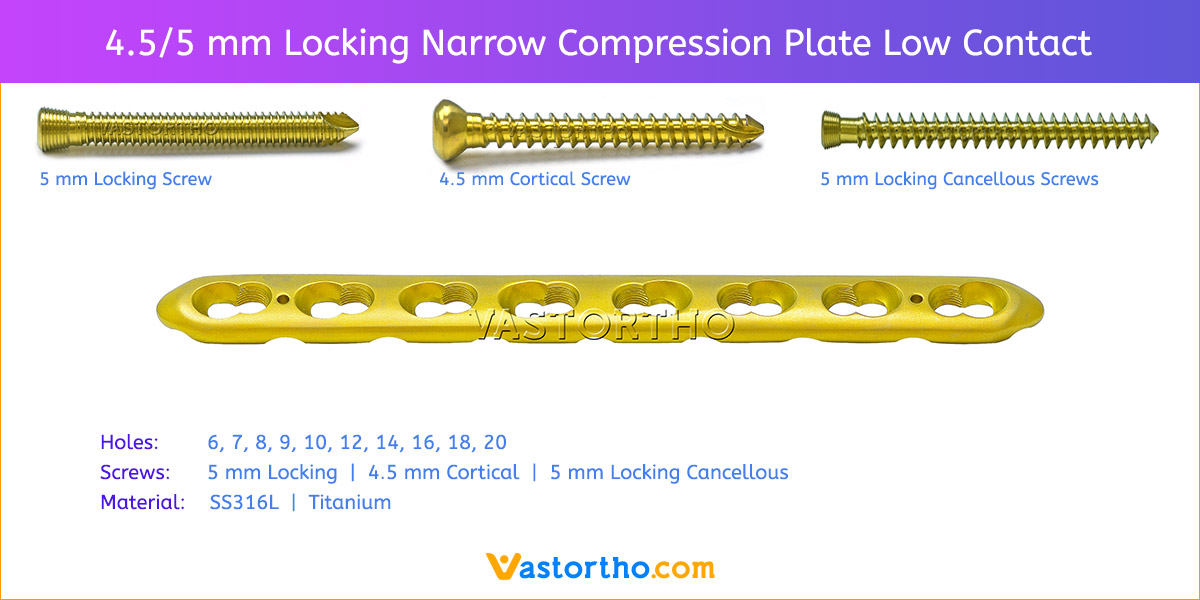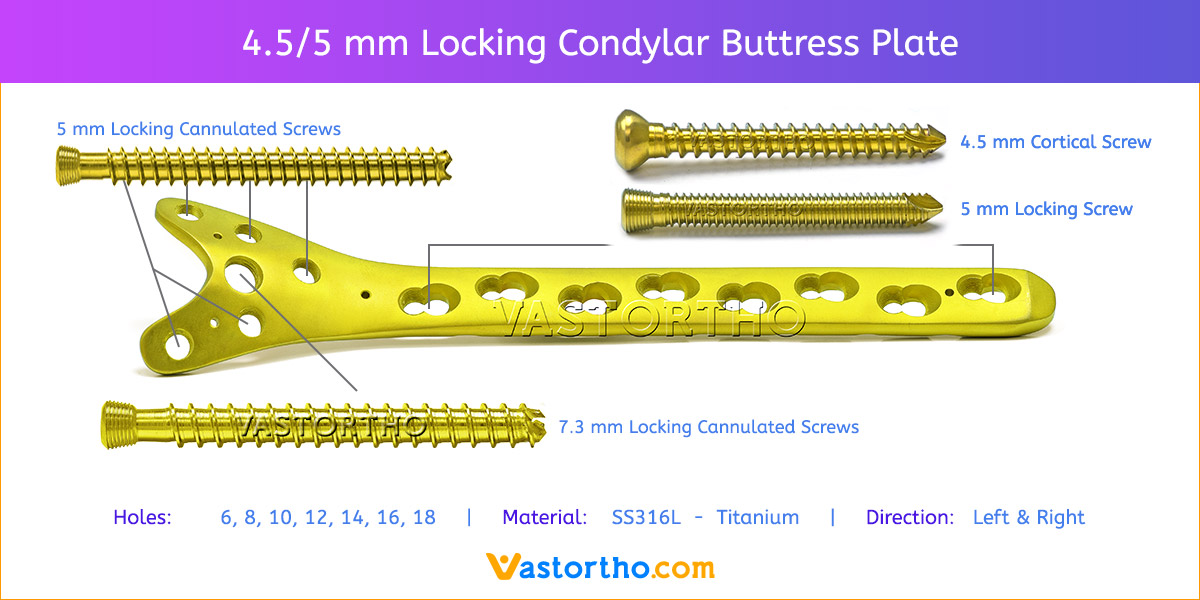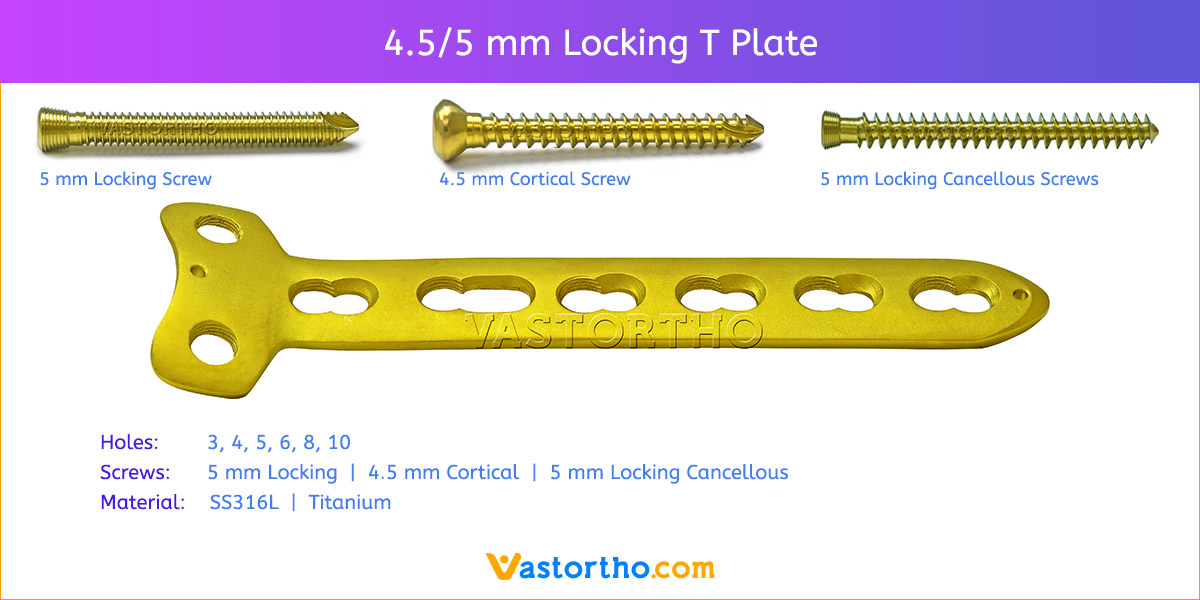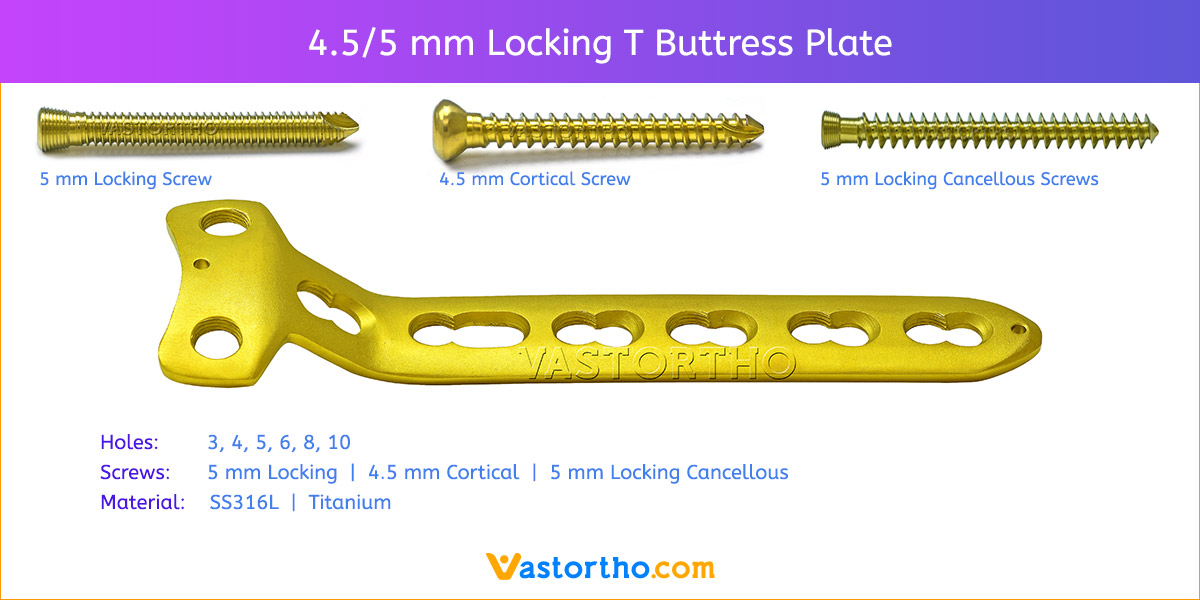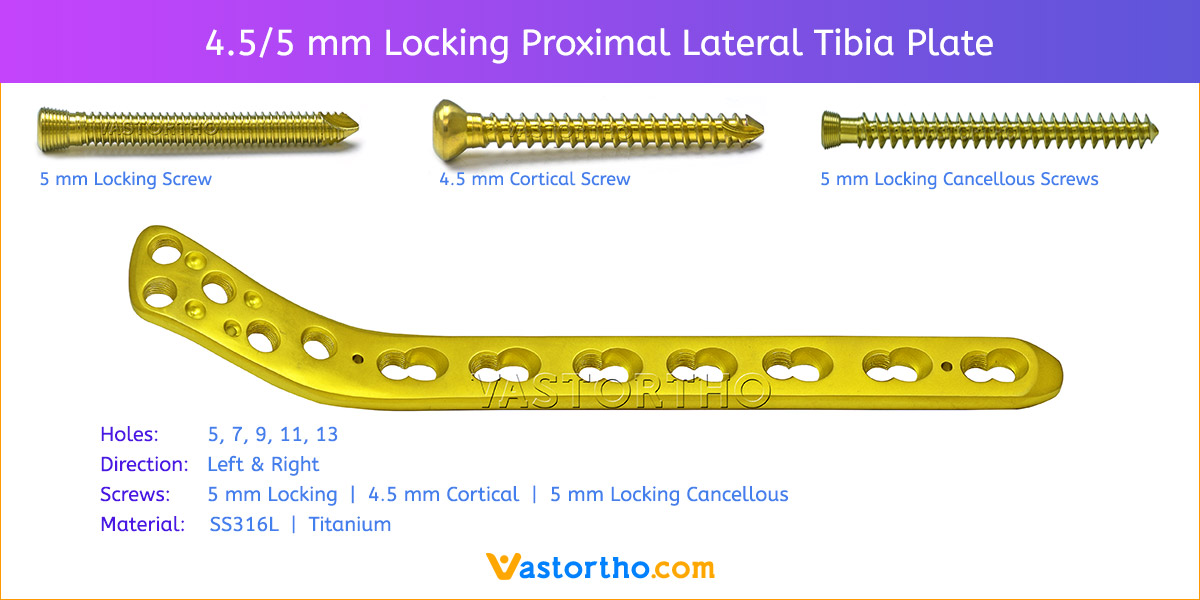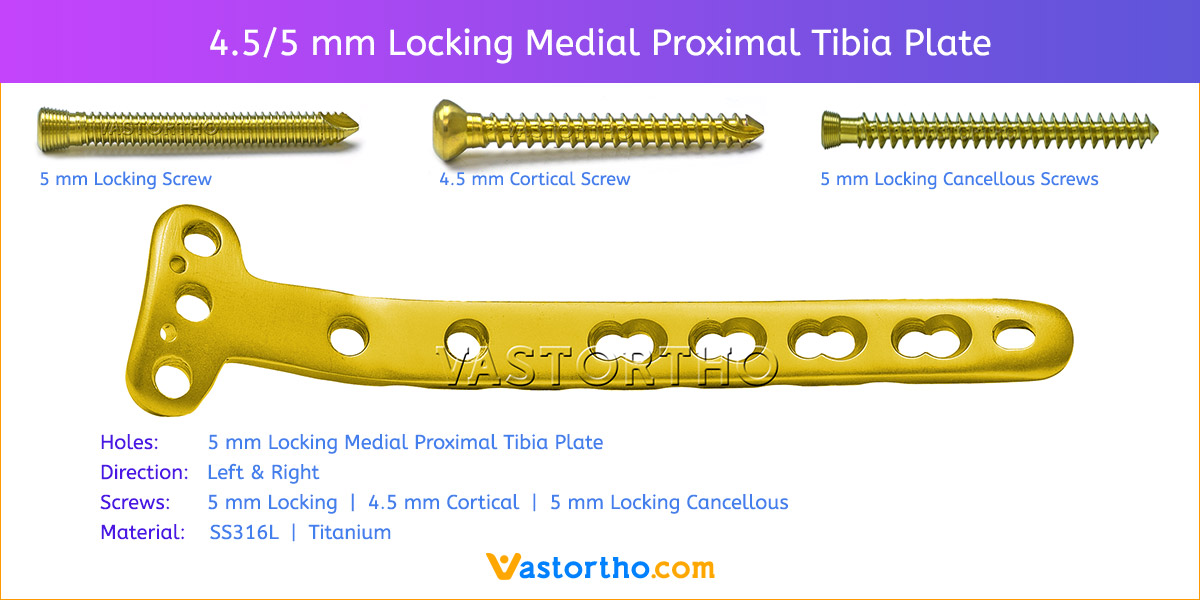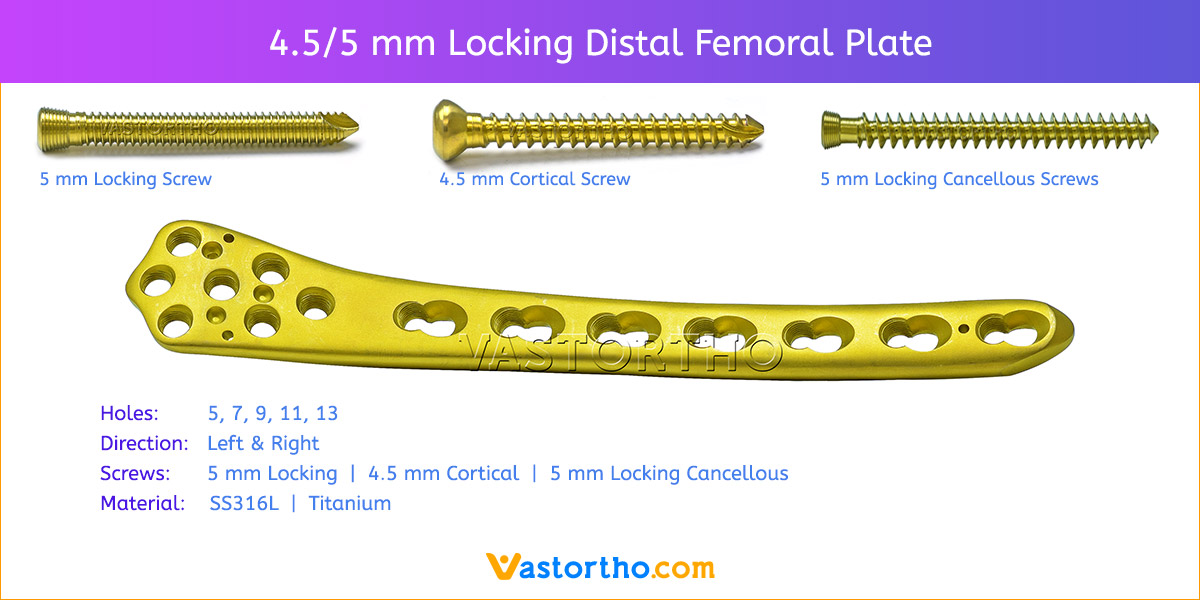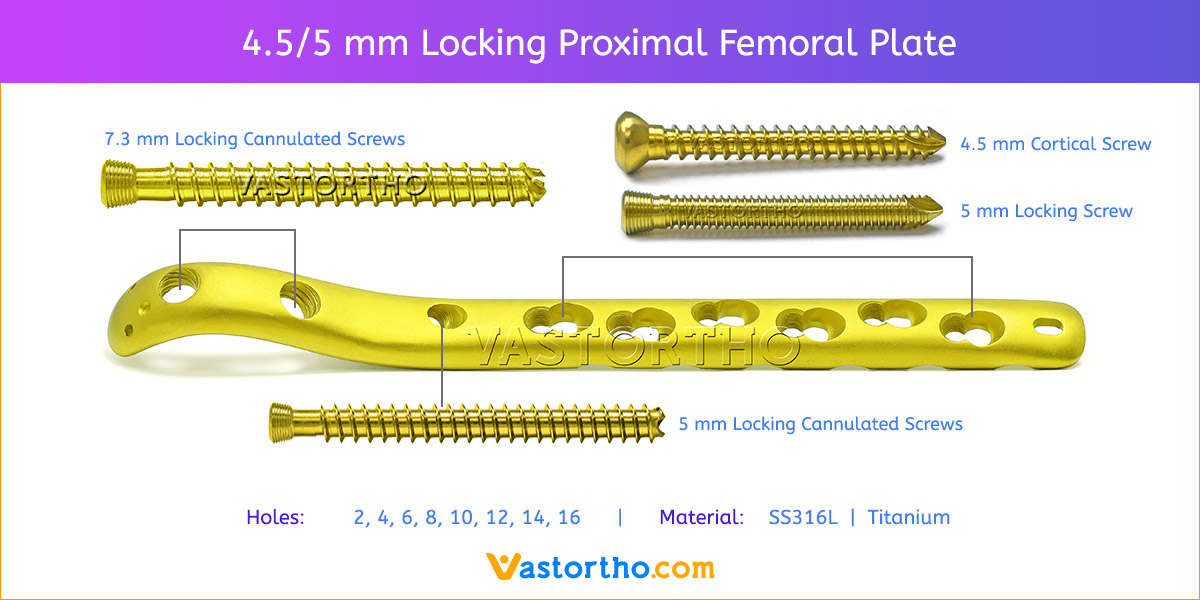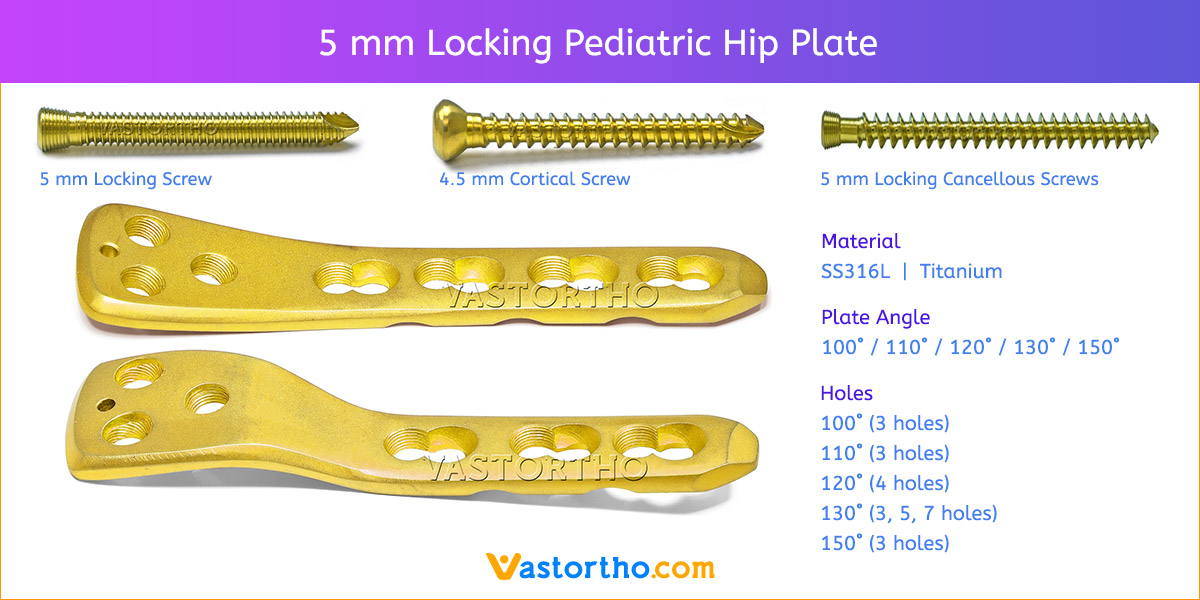4.5/5 mm Locking Proximal Femoral Hook Plate Specification, Uses, Sizes & Surgical Instruments.
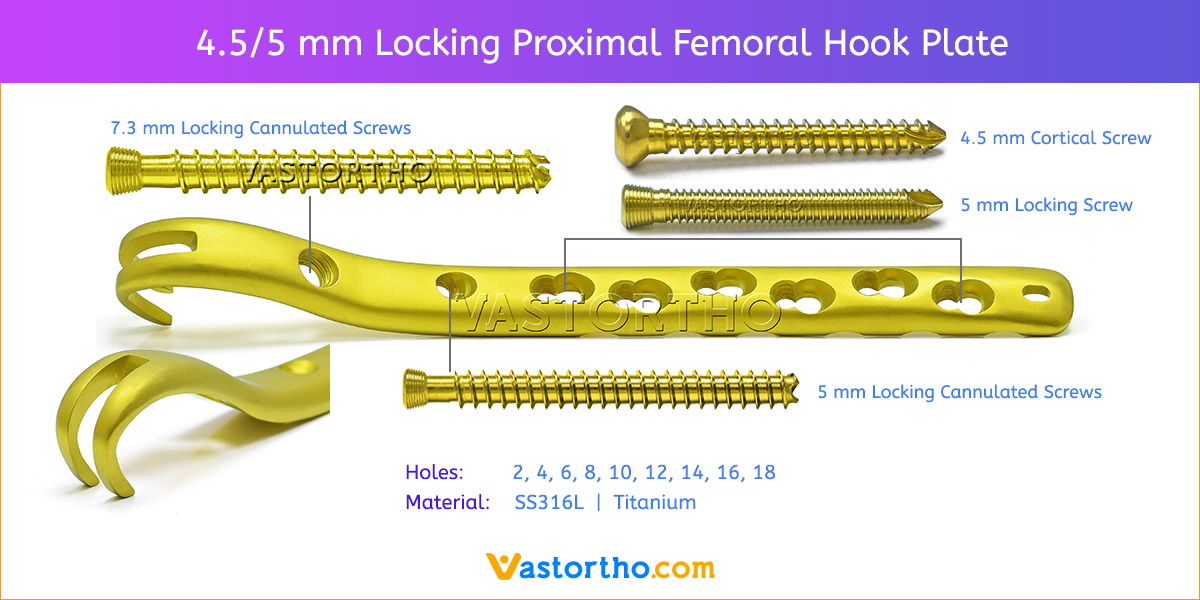
4.5/5 mm Locking Proximal Femoral Hook Plate Specification
- Plates available holes are 2, 4, 6, 8, 10, 12, 14, 16 and 18.
- Plate combi holes allow fixation with locking screws in the threaded section and cortex screws in the dynamic compression unit section for compression.
- The First proximal screw hole accepts a 7.3 mm cannulated locking oriented at 95° to the plate shaft.
- The second proximal screw hole accepts a 5 mm cannulated locking screw oriented at 110° to the plate shaft.
- The shaft holes accept 5 mm locking screws in the threaded portion or 4.5 mm cortical screws or 5 mm Locking cancellous screws in the compression portion. Distal locking holes in plate head accept 5 mm locking screws or 4.5 mm cortical screws.
- Anatomically precontoured to approximate the lateral aspect of the proximal femur.
- Two proximal hooks engage the superior tip of the greater trochanter.
- Use of locking screws provides an angular stable construct independent of bone quality.
- Accepts the articulated tension device to tension the plate and create a load-sharing construct.
- 4.5/5 mm Locking Proximal Femoral Hook Plate allow implant placement to address the individual fracture pattern.
- Limited-contact surface reduces bone-to-plate contact and helps to preserve the periosteal blood supply.
- Choice of different lengths of plate eliminates the need to cut plates.
- Available in both Titanium and Stainless steel.
- locking plate increases construct stability, decreases risk of screw back-out and subsequent loss of reduction. It also reduces the need for precise anatomic plate contouring and minimizes the risk of stripped screw holes.
- A complete Instruments Set is available for 4.5/5 mm Locking Proximal Femoral Hook Plate. General Instruments are available for this plate such as Plate Bending Press, Plate Holding Forceps, Plate Bending Pliers, Bone Holding Forceps, Bone Elevators, Bone Cutter, Bone Nibbler, Depth Gauge, Sleeve, Screw Driver, Trocar Sleeve etc.
4.5/5 mm Locking Proximal Femoral Hook Plate Uses
4.5/5 mm Locking Proximal Femoral Hook Plate is intended for fractures of the femur including:
- Fractures of the trochanteric region, trochanteric simple, cervicotrochanteric, trochanterodiaphyseal, multifragmentary pertrochanteric, intertrochanteric, reversed or transverse fractures of the trochanteric region or with additional fracture of the medial cortex.
- Fractures of the proximal end of the femur combined with ipsilateral shaft fractures.
- Metastatic fracture of the proximal femur.
- Osteotomies of the proximal femur.
- Also for use in fixation of osteopenic bone and fixation of nonunions or malunions.
- Periprosthetic Fractures.


